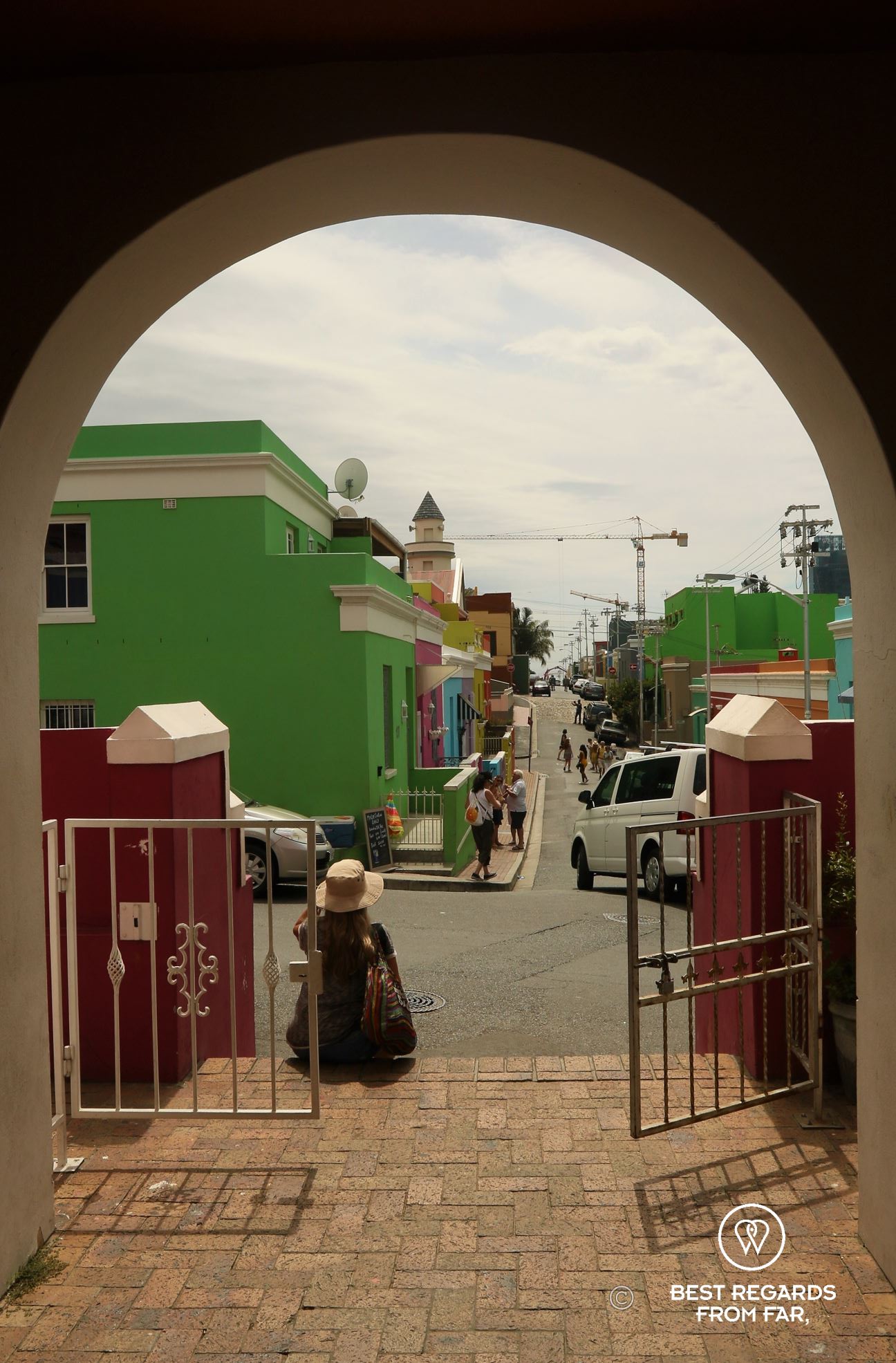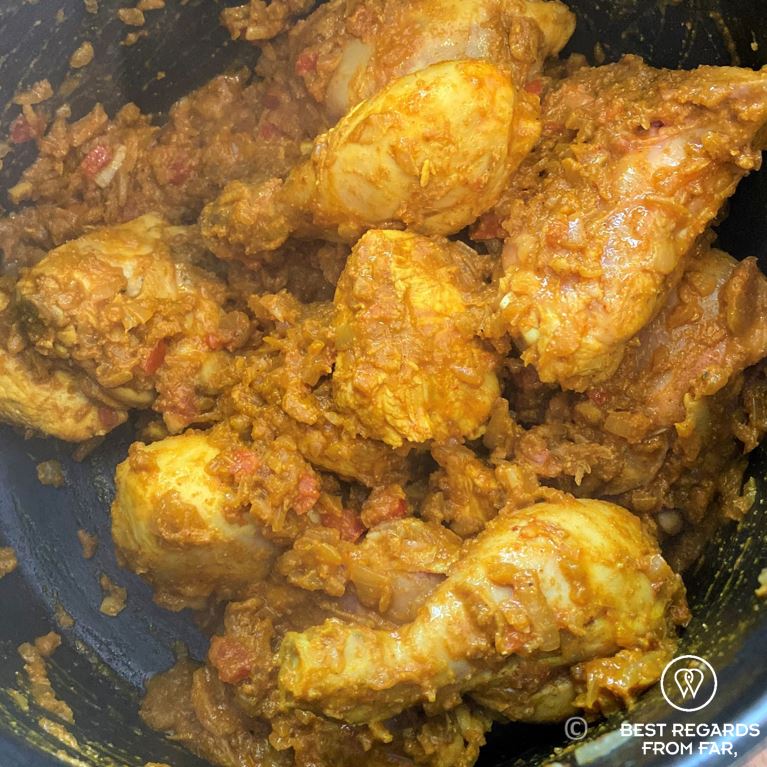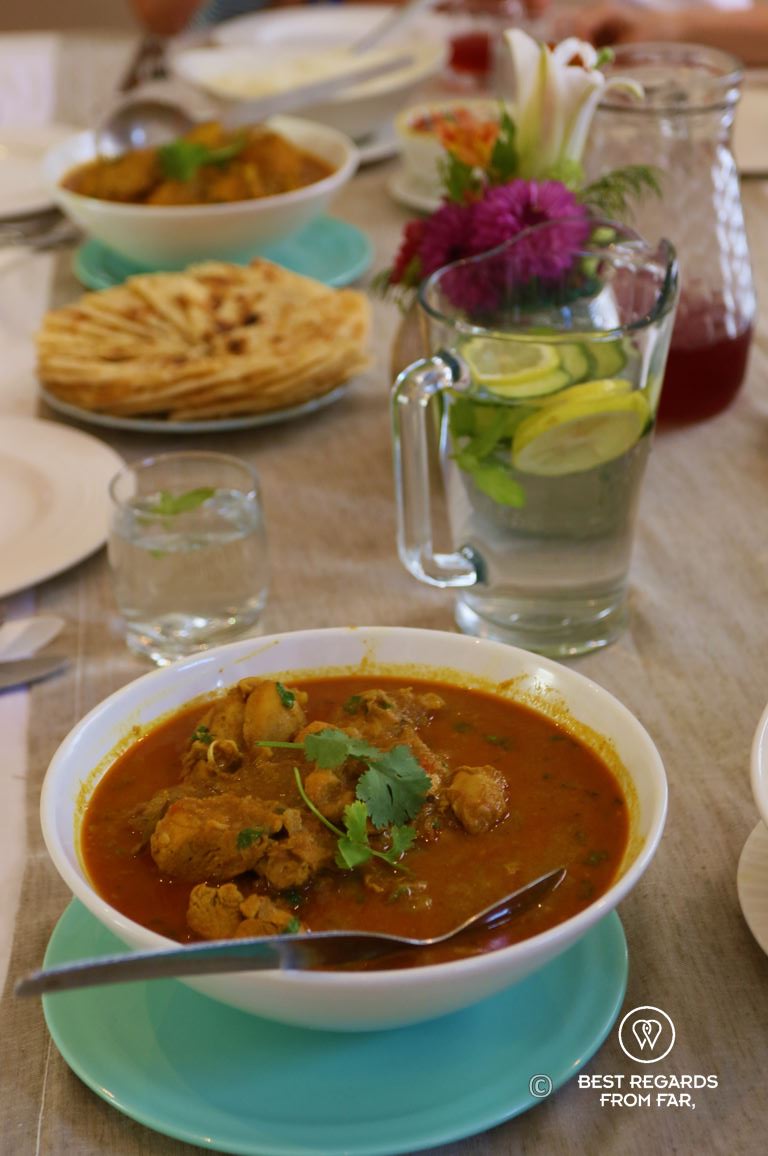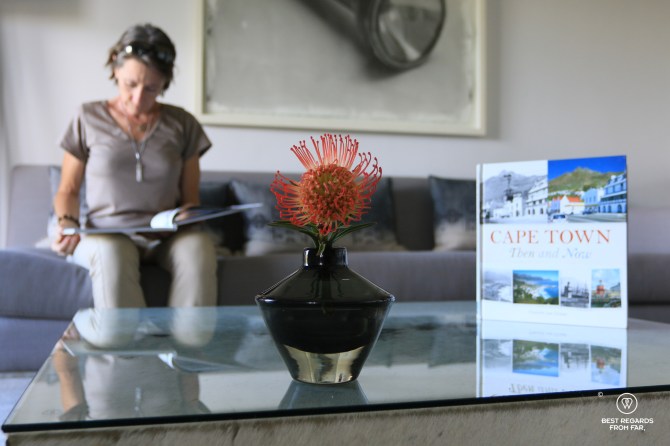Article updated on July 15, 2023
Text & photographs: Claire Lessiau & Marcella van Alphen
The freshly painted bright pink, green, yellow, and orange houses, lined up along the hilly cobble-stoned street contrast greatly with the deep blue South African sky. Signal Hill towers Bo-Kaap while the unmistakable shape of Table Mountain sets the background of this post-card perfect scenery. A filming crew
in front of the flat-roofed one-storey houses interrupts the daily routines of locals. Between two takes, kids in madrasah, women with colourful headscarves or old men sneak into the Atlas Trading Centre spice store from the corner store at Wale and Rose streets. Beyond the social gathering these neighbourhood institutions represent – both have been here for more than 50 years – the Bo-Kaap residents are here for a very serious reason: buying the ingredients that are essential for their traditional Cape Malay dishes. And this is precisely the reason why we are here too!



Zayed warmly welcomes us in Cape Town’s Muslim community with a wide smile. Son of Zainie, a Cape Town legend for starting the Biesmiellah Café about 40 years ago, and famous nation-wide as the figure of Cape Malay cuisine, Zayed continues his mother’s legacy with his cooking classes. The family spirit resonates as Zayed and his wife Zoeffa pass down Zainie’s favourite Cape Malay recipes during interactive sessions in their home with the next generation joyfully giving a hand.


Obviously, ingredients are purchased within Bo-Kaap, or are coming straight from the communal courtyard they share with 10 other families: papayas, avocados, dates, bananas, peppercorns, and even curry leaves can be harvested in the shady garden watered by one of Cape Town’s 26 natural springs sprouting in the yard.


As Zoeffa picks a few curry leaves, she explains impishly: “This will be our secret ingredient today. We can’t take many leaves as the young tree is slowly getting used to Cape Town’s climate. Usually it likes it more humid like in Durban… Come on in and let’s start cooking!” The ingredients could not be any fresher!


We start on our chicken curry mixing ground turmeric, cumin, coriander, fennel and paprika to our own taste. Cape Malay cooking is all about the spices, without the spicy hot chilli factor that is found in Indian food. Tasks are divided amongst participants between caramelising onions, adding the ingredients, and slowly cooking the chicken while balancing out the bitterness of the turmeric with lemon and sugar. While we let our main dish simmer Zoeffa moves on to the next dish: samosas! These triangular-shaped stuffed envelopes find their origins in India, Pakistan and Bangladesh. If the stuffing is varied from the traditional minced beef, to cheese or even chocolate and bananas, the folding method is firmly set. The thin dough is different from phyllo dough or rice paper, and needs to be handled with care following Zoeffa’s instructions. After a few tries we get the hang of it, making sure that the corners of our equilateral triangles are closed before Zayed gets on to frying them.




As the curry needs to simmer more we move on to our roti, the large flat bread that is served a side to many dishes. Flour, water, salt and (a lot of) butter is all that is needed for a good roti. After mixing the ingredients, kneading the dough and letting it rest for 10 to 15 minutes, we all flatten it and spread melted butter before carefully following the traditional technique, twisting, curling and coiling the dough up into a double bun. After about half an hour in the freezer, it is time to flatten the buns into a plate-sized circle in order to fry it into a hot pan.





Dhaltjies are the other Cape Malay favourite on today’s menu. These deep-fried crispy balls made of chickpea flower and spinach are mouth-watering and addictive.



Last but not least, Zoeffa and Zayed set a nice table around freshly cut flowers and our dishes. We cheer with our new friends “Biesmiellah!” The fresh grape juice flows while we indulge ourselves and taste all the delicious food we have just cooked. Someone knocks on the door. “It is not three o’clock yet”, Zoeffa answers. Food is better shared, and whether it is to spread the love with their neighbours or to help the needy, it is normal for Zoeffa and Zayed as it is in the five pillars of Islam to open their door. The Muslim neighbourhood of Bo-Kaap is one of Cape Town’s most characteristic and friendliest where one wants to keep coming back to, and its Cape Malay food is certainly one of the reasons why.


Travel tips:
- To cook with Zayed and Zoeffa, make sure to book ahead through The Bo-Kaap Cooking Tour.
- Today the Biesmiellah Restaurant still exists but it is no longer owned nor run by Zainie Misbach’s family.
- For more about the history of Bo Kaap please refer to our article here.
- To best enjoy Cape Town, stay at The Kensington Place and walk to the trendy Kloof Street restaurants.
- Check out this interactive map for the specific details to help you plan your trip and more articles and photos (zoom out) about the area! Here is a short tutorial to download it.
Like it? Pin It!

For more in Cape Town:

















Looks delicious!